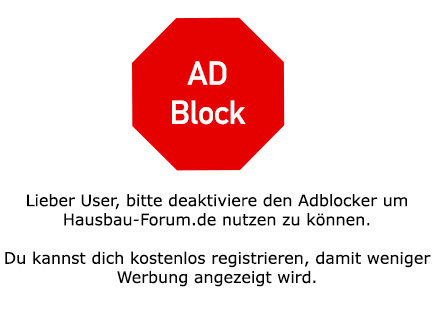Bluesky
2020-05-21 09:17:56
- #1
Hello dear community,
the topic has already been discussed in some posts here, but long-term experiences are missing.
Currently, I am planning a new 150 m2 house with a basement. We have now narrowed the choice down to 2 developers who differ fundamentally in the construction materials.
The house is planned to be built without insulation in a monolithic construction method. One developer wants to work with aerated concrete or Poroton (36.5 cm wall thickness), the other with a solid precast wall made of expanded clay with a wall thickness of 41 cm. We are now somewhat uncertain because the thermal transmittance coefficient is given by the developers as 0.21 (Poroton) and 2.2 (expanded clay). Both assure that the houses comply with the KFW 55 standard.
I am now unclear how the U-values can differ so much or whether other factors, such as the mortar used with Poroton, are taken into account. The insulation in the attic as well as the windows used (triple glazed) seem to be comparable in both cases. Are there any long-term experiences with expanded clay solid walls here in the forum?
Can you tell me whether a similar energy balance for heating can be expected based on the KFW 55 standard?
Our concerns are that with a heat pump and poor insulation, we will not achieve sufficient room heating or will cause extremely high heating costs due to additional heating with heating rods.
Best regards,
Sven
the topic has already been discussed in some posts here, but long-term experiences are missing.
Currently, I am planning a new 150 m2 house with a basement. We have now narrowed the choice down to 2 developers who differ fundamentally in the construction materials.
The house is planned to be built without insulation in a monolithic construction method. One developer wants to work with aerated concrete or Poroton (36.5 cm wall thickness), the other with a solid precast wall made of expanded clay with a wall thickness of 41 cm. We are now somewhat uncertain because the thermal transmittance coefficient is given by the developers as 0.21 (Poroton) and 2.2 (expanded clay). Both assure that the houses comply with the KFW 55 standard.
I am now unclear how the U-values can differ so much or whether other factors, such as the mortar used with Poroton, are taken into account. The insulation in the attic as well as the windows used (triple glazed) seem to be comparable in both cases. Are there any long-term experiences with expanded clay solid walls here in the forum?
Can you tell me whether a similar energy balance for heating can be expected based on the KFW 55 standard?
Our concerns are that with a heat pump and poor insulation, we will not achieve sufficient room heating or will cause extremely high heating costs due to additional heating with heating rods.
Best regards,
Sven
